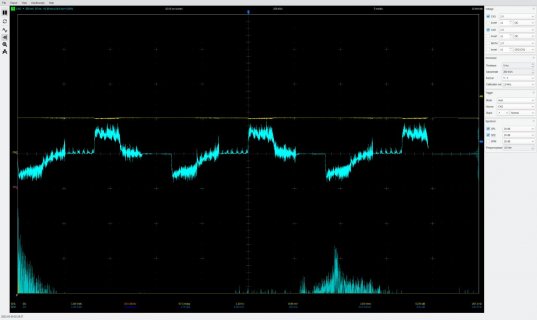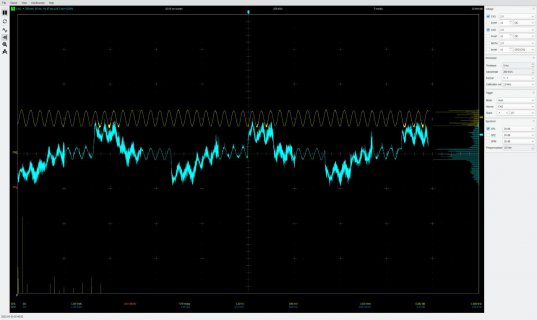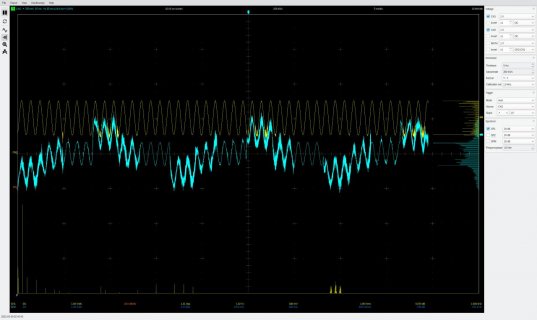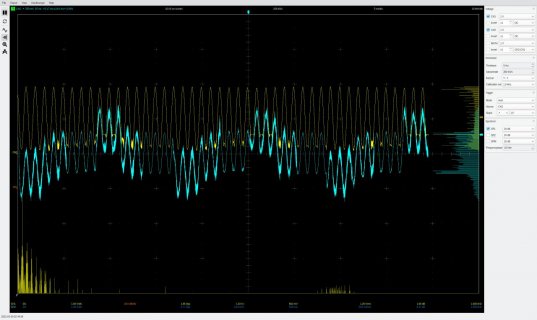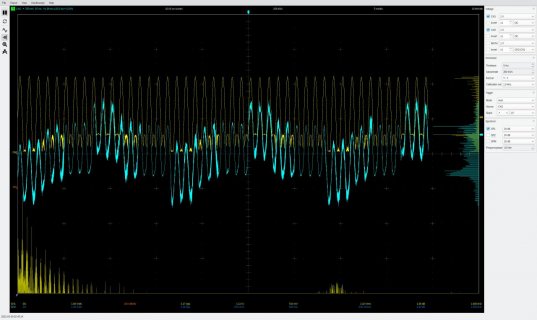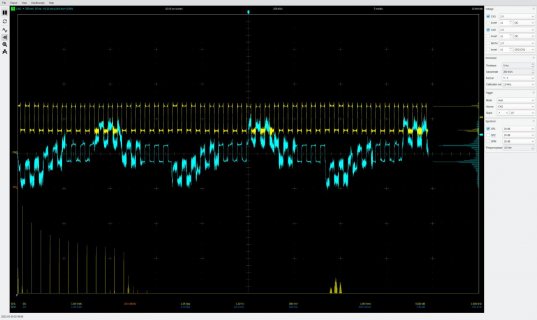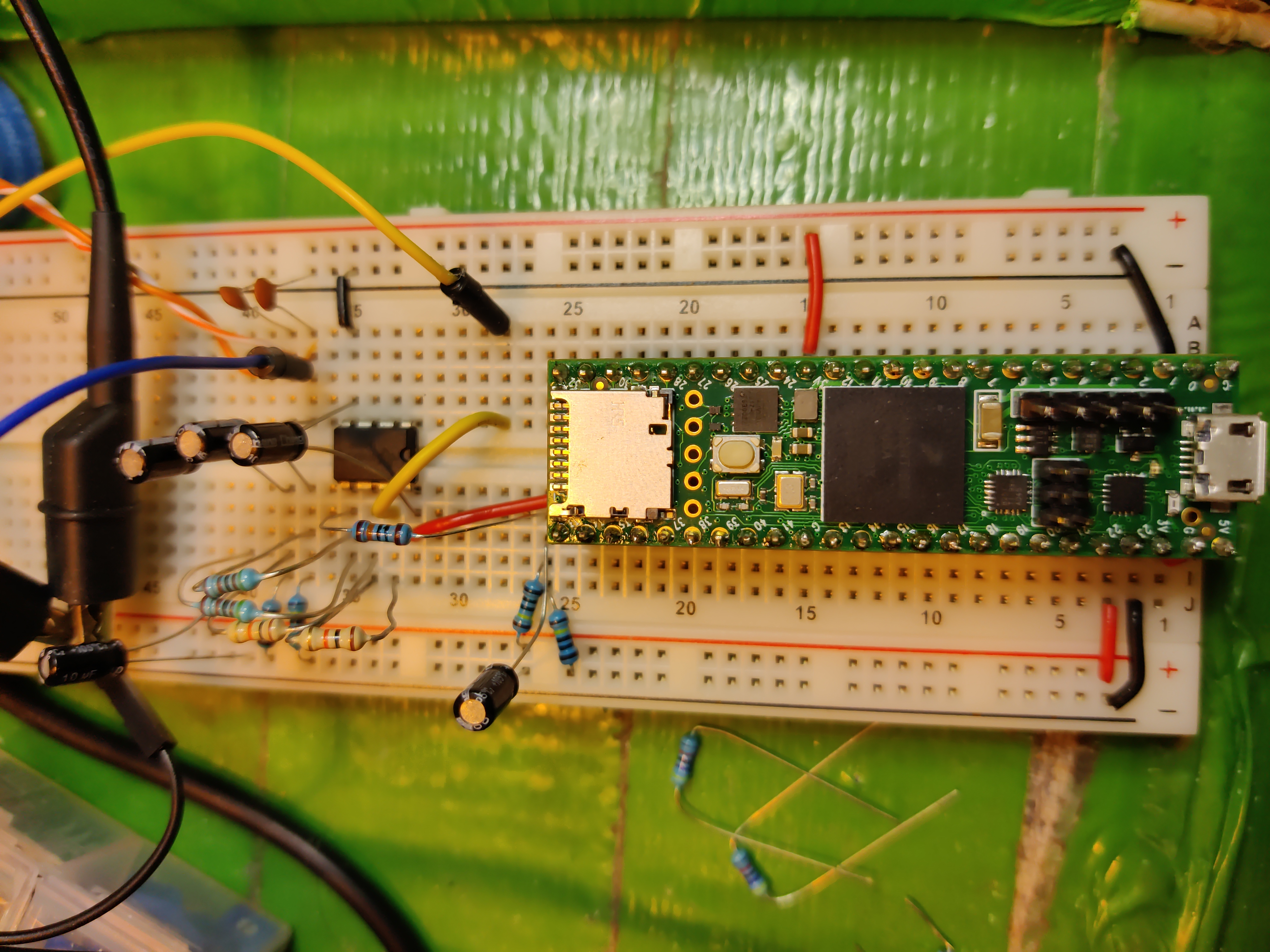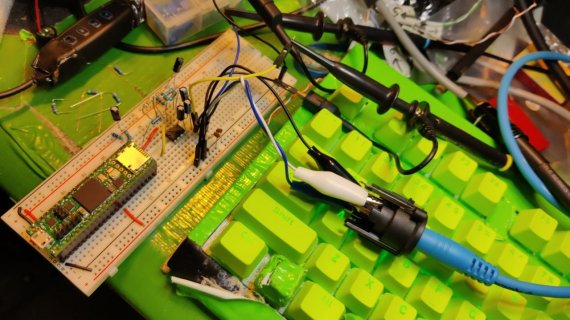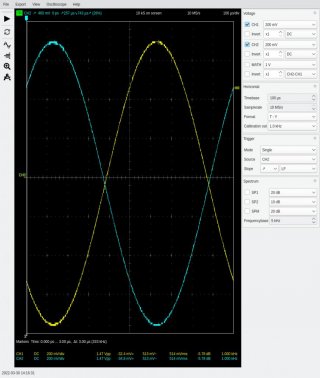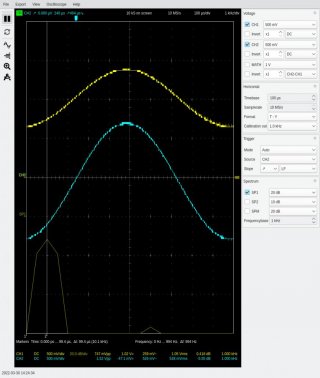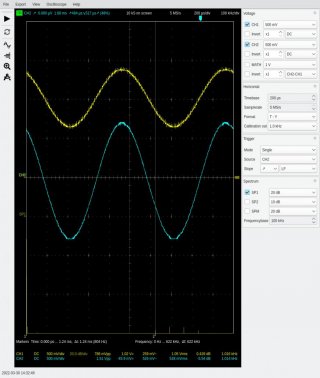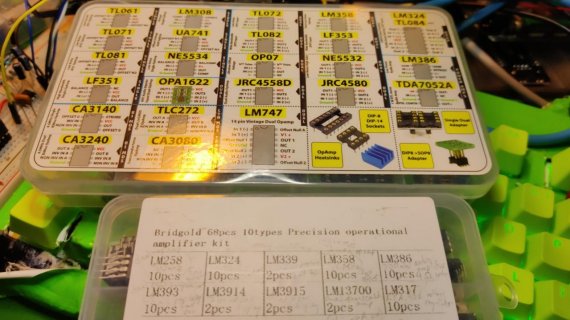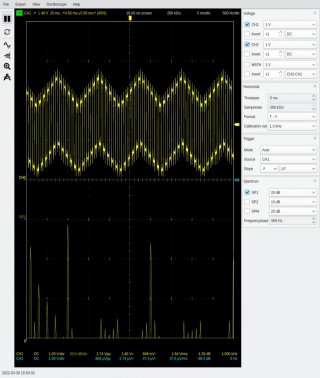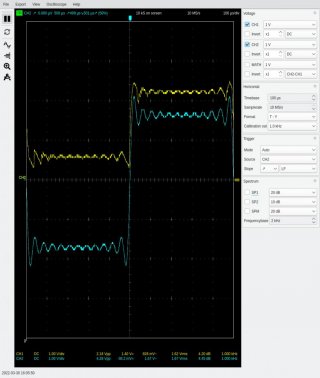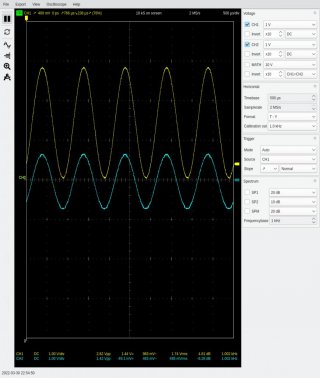Noticing ~12 kiloohm between ground and 3.3v lines, on Teensy 4.0 & 4.1 unconnected
I have a working ohmmeter. I have teensy 4.0 or 4.1 unconnected. I connect the - input of my ohmmeter to the teensy ground, and the + input of my ohmmeter to the teensy 3.3v line (either of the 3.3v on Teensy 4.1 too), and I get open circuit, which is good. But when I swap the + & - connections, then with the - input of my ohmmeter connected to either teensy 3.3v line and my ohmmeter + input connected to teensy ground, I then measure 12.35 kohms. I am not sure why there would be a conducting path between those two lines. Again I have the teensy disconnect from anything else.
I also notice that the 3.3V line can't nicely create a 1/2 voltage divider with ground when using resisters greater than about 1 kohm. When I put a resistor from 3.3V to a measuring node, and then put a same sized resistor from that measuring node to teensy's ground, then I would expect the middle measuring note to report 3.3V / 2, or 1.65 V, exactly. While it does that for resistors of size <= 1kohm, however, for larger resistances, particularly 1 Mohm resistors, the voltage I read in the midpoint is much lower. This strange result does seems to be consistent with my earlier measurment with the ohmmeter that there is roughtly 12.35 kohms resistance already between ground and 3.3V.
I do want to know why this ~12.35 kohm resistance is present...and I can't seem to pick out a reason from looking at the schematic.
Unfortunately I want to generate a virtual 1.65v middle reference level, and I was going to use a voltage divider with a couple big ~1 Mohm resistors so I don't draw a lot of current. But that ~12.35 kohms that is already present means I would have to resort to using small resistors which unfortunately drain a lot of power.
Though at least the 5 V power node doesn't seem to have any resistance to ground, so I can use 3 big identical resistors in series to create a 1.667 voltage reference. But I still want to divide the 3.3V supply to create a 1.65 V reference because the Teensy 4.x comparators can generate that midpoint voltage internally (though the reference manual doesn't mention any way to get those analog references voltages out of the chip). I realize I can make a 50% duty cycle PWM output connected to a big capacitor to ground and it will grab the middle level, though still there will be fluctations in that level I won't like.
So my two big questions are: Why is there this 12.35 kohm resistance between 3.3V and ground. Why does it not appear when I have (-) of my ohm meter connected to ground and (+) connected to 3.3v, but appears with the reverse way. And is there any other good way to get a 1.65v middle reference from the teensy.
I have a working ohmmeter. I have teensy 4.0 or 4.1 unconnected. I connect the - input of my ohmmeter to the teensy ground, and the + input of my ohmmeter to the teensy 3.3v line (either of the 3.3v on Teensy 4.1 too), and I get open circuit, which is good. But when I swap the + & - connections, then with the - input of my ohmmeter connected to either teensy 3.3v line and my ohmmeter + input connected to teensy ground, I then measure 12.35 kohms. I am not sure why there would be a conducting path between those two lines. Again I have the teensy disconnect from anything else.
I also notice that the 3.3V line can't nicely create a 1/2 voltage divider with ground when using resisters greater than about 1 kohm. When I put a resistor from 3.3V to a measuring node, and then put a same sized resistor from that measuring node to teensy's ground, then I would expect the middle measuring note to report 3.3V / 2, or 1.65 V, exactly. While it does that for resistors of size <= 1kohm, however, for larger resistances, particularly 1 Mohm resistors, the voltage I read in the midpoint is much lower. This strange result does seems to be consistent with my earlier measurment with the ohmmeter that there is roughtly 12.35 kohms resistance already between ground and 3.3V.
I do want to know why this ~12.35 kohm resistance is present...and I can't seem to pick out a reason from looking at the schematic.
Unfortunately I want to generate a virtual 1.65v middle reference level, and I was going to use a voltage divider with a couple big ~1 Mohm resistors so I don't draw a lot of current. But that ~12.35 kohms that is already present means I would have to resort to using small resistors which unfortunately drain a lot of power.
Though at least the 5 V power node doesn't seem to have any resistance to ground, so I can use 3 big identical resistors in series to create a 1.667 voltage reference. But I still want to divide the 3.3V supply to create a 1.65 V reference because the Teensy 4.x comparators can generate that midpoint voltage internally (though the reference manual doesn't mention any way to get those analog references voltages out of the chip). I realize I can make a 50% duty cycle PWM output connected to a big capacitor to ground and it will grab the middle level, though still there will be fluctations in that level I won't like.
So my two big questions are: Why is there this 12.35 kohm resistance between 3.3V and ground. Why does it not appear when I have (-) of my ohm meter connected to ground and (+) connected to 3.3v, but appears with the reverse way. And is there any other good way to get a 1.65v middle reference from the teensy.






